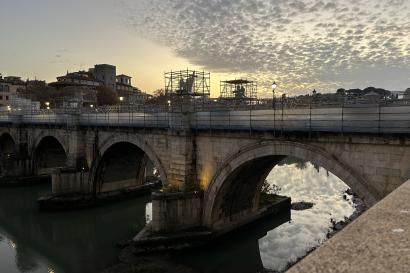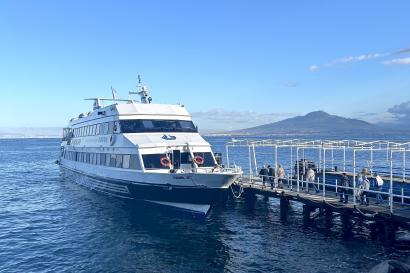Last semester I interned at the American Academy in Rome. A remarkable institution with respect to scholarly pursuit, educational opportunities, and actual physical space, the AAR has been so generous with me that I would feel selfish remaining silent about my experience any longer. I really need to share.
The American Academy in Rome supports advanced and graduate research in the fine arts and classics. Founded in 1894 as distinct schools of study, these two camps merged in 1897 to create an academy strengthened by the Italian and expatriate communities, which, at the turn of the century, were actively inquiring into history, archaeology, and artistic interpretation of the past. I worked with Valentina Follo, the curator of the Norton-Van Buren Archaeological Study Collection and a professor at IES Rome. An archaeological study collection is a collection of ancient artifacts held by an academic institution and used by students or scholars for research and learning. The logic is: why look at images of Etruscan bucchero when you could touch/work with/physically experience it? I was thoroughly spoiled by daily interaction with stimulating minds and museum-quality artifacts – really, who is that disgustingly lucky?
While much of my time and attention was devoted to research on the history of the study collection and continued organization/inventory of the artifacts, I participated in a number of unique activities, including interaction with conservators of bronze and lead artifacts and helping to create a small exhibit. Titled “From the Ground Up: The Making of the Norton-Van Buren Study Collection,” this exhibit was the culmination of my work at the AAR, and I couldn’t have asked for a better project to inspire in me an appreciation and understanding of the collection itself. You can read more on the official AAR website here.
The IES Rome internships are not easy. They push students to develop their language, interpersonal, and cross-cultural skills, and in my case to expand both my research abilities and my expectations of the professional environment. I know this experience will continue giving, opening doors and creating connections.
This has been a straight and narrow post without much to entertain other than the facts, so thanks for sticking with me. Some things just need to be said: thank you Valentina, thank you AAR, thank you IES.

Elisabeth Hawthorne
<p><span style="color: rgb(29, 29, 29); font-family: Arial, Verdana, sans-serif; font-size: 12px; line-height: normal; background-color: rgb(237, 237, 237);">I’m your standard artistic mutt, head on the ground, feet in the clouds, brought to you by a serious case of wanderlust. Small-town Minnesota girl, ex-expat of Singapore, international traveler, art history major, varsity fencer, opera singer, aesthetics junkie, curious soul, gelato votary, far from home at Haverford College in Pennsylvania, making distance and immersion my teachers during a year abroad in Rome, Italy. You can follow along as I happily consume art and carbs in la bella città, but be warned I might not stay in one place for long!</span></p>







